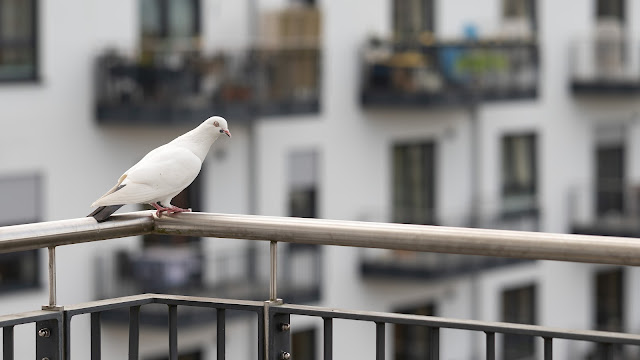Consider 85mm!
 |
| Nikon Z 85mm f/1.8 S @ f/1.8 1/25 ISO400 |
I took this after sunset while riding back on my bike. It is handheld with my typical manual settings. The bright lights make it possible to get a well-exposed subject. A crop to 16x9 leaves about 15MP, which is enough, even for prints. The motion blur is minimal at that distance. Of course, the IBIS helps to avoid camera shake.
Now, the 85mm is a focal length that renders everything well, no matter what you throw at it. It is a rather narrow angle of view for an everyday lens, so you often have to step back. But if that is possible, you are rewarded by a beautiful, concentrated view of your subject with a nicely rendered, smooth background.
 |
| f/6.3 1/400 ISO100 |
That is the reason why an 85mm lens is the typical portrait lens. You can get an extraordinarily smooth background shooting wide open, at the cost of a very shallow depth of view. Often, it is better to use f/4 to keep more than one eye in focus and, even more importantly, to allow the user to understand the background.
For this, you need to select the background wisely. It might be as important as the subject. The narrow angle of view of this light telephoto lens allows selecting the background even more than the 50mm lens, and much more than the 35mm lens.
 |
| f/2.8 1/80 ISO1600 |
The quality of this Nikon Z lens is superb. Even though it is a bit closed down, the Bokeh balls look nicely rounded, with only very smooth corners. They have just a tiny bit of a bright frame. And if you do not have spotlights in the image, the out-of-focus zones and the transitions look simply outstanding.
The lens is also suitable for street photography. Photographers like me, who are shy on the street, get a nice focal length to work from a distance. I like photos that feel more observing. A 35mm will get you into the scene, being part of it, or even intervening with it.
The main advantage of 85mm is that the background will play the same role as the subject.
You get a photo of people in their environment, not a close-up detached from it. This is totally surprising to some photographers. Many would argue that a wide-angle lens shows more of the surroundings. It does, but it is also shrinking the background a lot, making it less important.
 |
| f/2.8 1/500 ISO100 |
The piano player is a typical scene. With a wider lens, the folks in the background would be much smaller and the buildings much larger. I find that this scene works better with a longer lens.
 |
| f/2.8 1/800 ISO100 |
Can you do animals and wildlife? Not really. The picture above is a crop, and the dove was very close. But the sharpness of the lens helps to still get excellent results. With a higher resolution sensor, you can call this lens 85mm to 135mm if you are satisfied with 20MP images.
The horse below is cropped even more. But modern sensors and a lens like this Nikon S gem are so good that I would not hesitate to print the image with 60cm width.
 |
| f/2.8 1/4000 ISO100, cropped to 5MP |
The only letdown of this lens is the close focus distance. The maximal magnification rate is only about 1:7. Compare that to the impressive 1:2, which you get with the Nikon Z 70-180 f/2.8 zoom at 70mm. For me, such a telephoto zoom is the main competition to the 85mm. It is more versatile and also offers a relatively wide aperture and smooth background, especially at the longer end. There are, however, measurable and even visible differences in sharpness and contrast. And the 85mm is more compact, lighter, and less intrusive.
All in all, this is a lovely lens. Almost everything and everyone looks good when shot with this lens. It is much easier to select a nice background composition and to isolate the subject.


Very nice writeup. How do you carry your camera & lens while riding your bike? Best regards Christoph
ReplyDelete